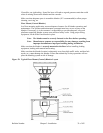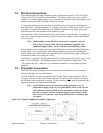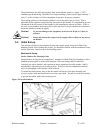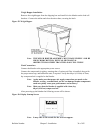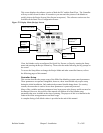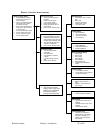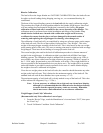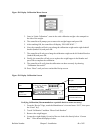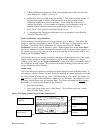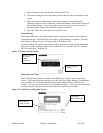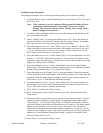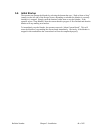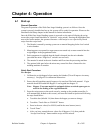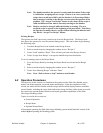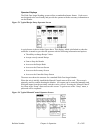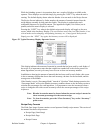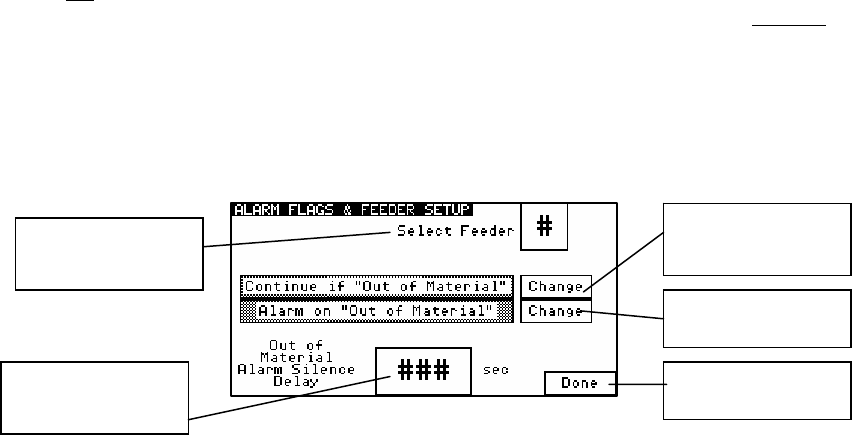
Bulletin Number Chapter 3: Installation 41 of 102
5. Add the calibration weight to each load cell mounting bracket and write down the
value displayed in “weight”, as in step 4.
6. Subtract the values recorded in step 4 from step 5. This is the measured weight. If
the measured weight is within a 0.003 pounds of the weight stamped on the
calibration weight, then you are within spec. If not, follow the steps above to
calibrate the blender. (If your blender is frequently out of calibration, verify the
operator is being cautious removing the weigh hopper during clean out.)
7. Press “Done” until you have reached the Recipe screen.
8. ***Anything in the Diagnostics Menu that is not covered here is in the Detailed
Controller Setup Section***
Feeder Calibration (Auger Blenders)
Feeder calibration should be done on all Auger blenders prior to start-up. This allows the
blender to configure the parameters which will best suit the auger size and gearbox ratio of
the feeder. To perform a feeder calibration, the operator must enter the “Feeder
Calibration” screen (see menu structure), select a feeder number, then touch “Press Here.”
The feeder calibration will start automatically and will notify the operator when complete. If
the operator so desires, they can repeat the process by entering in a new feeder number and
touching the “Press Here”button.
If the blender does not see enough weight gain during the calibration process or if the weigh
hopper reaches maximum weight, then an error is given and the calibration is a failure.
Another useful feature on the “Feeder Calibration” screen is the ability to manually enter in
the “weight per second” values. This increases the blender learning process and the values
can be recorded for future blending.
Alarm Setup
This screen allows the operator to configure the alarm settings for each individual feeder. It
can configure whether a feeder will retry during the metering of a batch, and enable or disable
the “Out of Material” alarm for any feeder. If the alarm flag is set to “Stop”, the blender will
not
continue. It stops on that component continuing to try and meter. The optional low level
proximity switches have their own separate alarm. The alarm will sound, but does not
stop
the blender. To configure each hopper do the following:
1. Enter the Setup Menu.
2. Once in the Setup menu, press “Alarm Setup.” This will take you to the “Alarm
Flags & Feeder Setup” screen.
Figure 30: Display Alarm Flags & Feeder Setup Screen
Enable or Disable
Retries
Enable or Disable
Alarms
Go back to Setup
Directory
Change the Alarm
Silence Delay
Select a Feeder to
Configure



